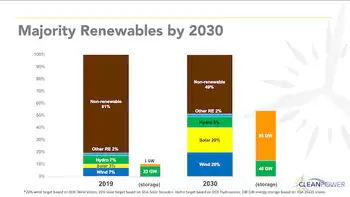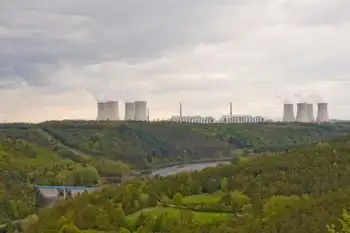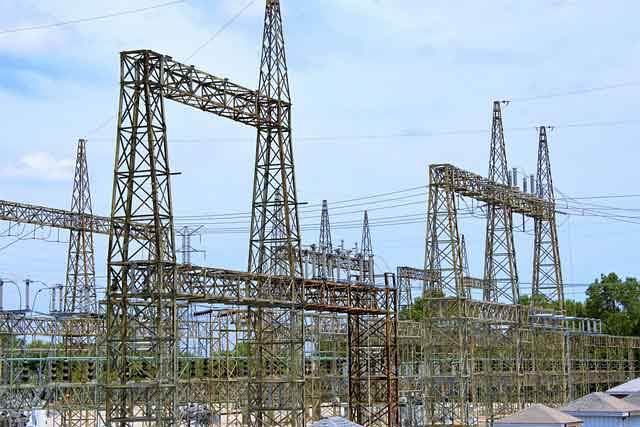Nanticoke promoted as nuclear power site
By Toronto Star
CSA Z463 Electrical Maintenance -
Our customized live online or in‑person group training can be delivered to your staff at your location.

- Live Online
- 6 hours Instructor-led
- Group Training Available
Both Norfolk and Haldimand counties sent letters last month to Premier Dalton McGuinty asking for the go-ahead to start an environmental assessment that would be filed, along with a formal site application, by nuclear operator Bruce Power, according to Haldimand Mayor Marie Trainer.
"Bruce realizes the benefits of coming here," said Trainer who, according to Haldimand's letter, directly raised the issue with Energy Minister Gerry Phillips on Jan. 27. "We're saying to the province, let them go forward."
Duncan Hawthorne, chief executive of Bruce Power, was unavailable for comment. The province has yet to respond to either county's request.
But Phillips reiterated to the Toronto Star that the next nuclear plant to be built in Ontario will be in a community where nuclear generation already exists. That limits locations to Clarington, the home of Darlington Nuclear Generating Station, and Tiverton, the home of the Bruce Nuclear Generating Station.
"I'm pretty single-mindedly focused on that one plant," said Phillips, at the same time not ruling out Nanticoke as a possible site for a second plant, if needed. He said environmental assessments started for the Darlington and Bruce sites were filed a year ago. "We're not going to lose a year for an environmental assessment somewhere else."
Haldimand is still pushing for consideration. Trainer said Bruce Power, which already supplies 20 per cent of Ontario's electricity out of its existing nuclear plant, has promised to build schools that would re-train the local workforce and erect wind turbines that would complement the power coming out of the plant.
She said Bruce Power is currently in negotiations with U.S. Steel, which acquired Stelco Inc. last August, to secure access to Stelco-owned land neighbouring the existing Nanticoke coal plant. "I think they'd like to start this as soon as possible," Trainer added.
Industry experts say Nanticoke is an ideal location for a nuclear plant, arguing that once the Nanticoke coal plant is closed there will be ample capacity on transmission lines, unlike the overcrowded transmission around Bruce Power's current site, where an "Orange Zone" prohibits the development of new renewable energy projects.
Phillips recognized those restraints. "We do not yet have a solution to some of the transmission issues around Bruce."
Informed sources say Bruce Power may be hedging its bets, quietly acknowledging that Darlington has an edge for the first build over the transmission-constrained Bruce site and that Nanticoke may be a better bet in round two. Hawthorne has recently been promoting the site, telling a gathering last week in Simcoe that, "If there's a shot for Nanticoke, it's going to happen in 2008."
Another benefit of Nanticoke is that it's on Lake Erie, making for easier delivery of construction equipment and access to cooling water required for large thermal plants. Locating a nuclear plant in Nanticoke could also bring stability to the power grid, which will be knocked out of balance once the coal plant there is closed. The Ontario Power Authority is currently grappling with how to fill that hole in generation.
But Trainer said her interest is in the "billions of dollars put into the workforce."
Shutting down the coal plant will lead directly to the loss of 600 jobs, not including the associated ripple effects on the local economy. That's on top of problems in the "tobacco belt," where a dramatic decline in tobacco farming has killed thousands of jobs over the past two decades.
An economic study prepared last fall by Harry Kitchen, a professor of economics at Trent University, concluded that a new nuclear plant in Nanticoke would create roughly 1,000 full-time jobs over the next decade and inject as much as $660 million into the local economy annually. That equates to a 16 per cent increase in economic activity in the communities of Haldimand and Norfolk.
The government appears, at least, to be preparing for the possibility of a second new nuclear plant.
A request for proposal that went out earlier this month to four qualified suppliers – Atomic Energy of Canada, GE-Hitachi Nuclear, Areva NP and Westinghouse Electric – outlined the need for a nuclear plant to provide between 2,000 megawatts to 3,500 megawatts of generation capacity.
But the document also asks bidders to include an "option" for the government to build one or two additional reactors, a move that Phillips called "good planning."











